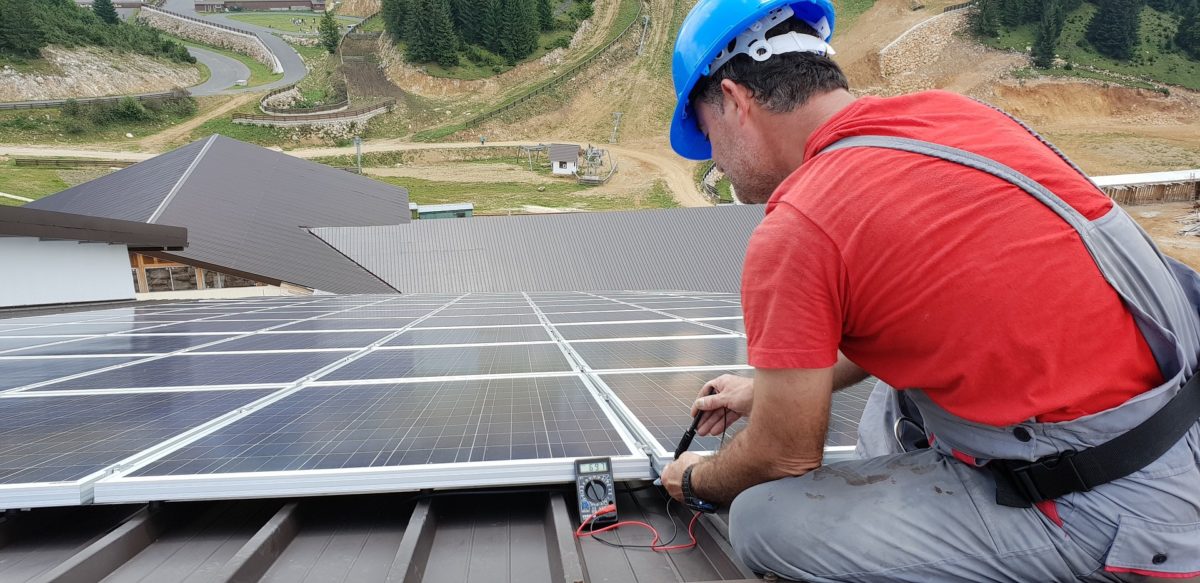More efficient and lower-cost PV products with a shorter lifetime than the industry standard 25-30 years may open new opportunities for project developers and plant owners in the years ahead, according to a study by MIT researchers.
In the paper Accelerating Photovoltaic Market Entry with Module Replacement, published in Joule, the researchers presented a module replacement strategy enabling project owners to achieve a profitable levelized cost of energy (LCOE) with PV modules with an expected life cycle of less than 15 years.
According to the study, panel replacement could help shorter-lived PV technologies currently excluded from the market enter the mainstream as long as they will last at least ten years, have a conversion efficiency above 20% and cost no more than $0.30/W.
“Emerging PV technologies with [a less-than] 15-year initial life can reach a competitive LCOE,” stated the report.
LCOE key
The key change which may open the door for shorter-lived panels is the reduction in panel prices which has ensured balance of system costs now make up most of the expense of solar projects. “That means that, as long as newer solar panels are electrically and physically compatible with the racking and electrical systems it can make economic sense to replace the panels with newer, better ones as they become available, while reusing the rest of the system,” stated the study.
The researchers analyzed a 100 MW solar park built with a tracker system, a 200 kW commercial rooftop system and a 6 kW residential array. For the analysis they relied on benchmark parameters from the U.S. Department of Energy’s National Renewable Energy Laboratory; assumptions about the future development of PV technology, financing and module recycling; and four independent tools for calculating LCOE.
“In all three installation types they found – depending on the particulars of local conditions – replacement with new modules after 10 to 15 years could in many cases provide economic advantages while maintaining the many environmental and emissions-reduction benefits of solar power,” the research team said.
The authors of the paper hope their findings will help shift the belief a minimum 25-year panel lifetime is required for profitability. “If someone comes up with a new technology with a 10-year lifetime no one is going to look at it,” stated the study. “That’s considered common knowledge in the field and it’s kind of crippling.”
Impact on recycling industry
The adoption of ‘more disposable’ PV technologies, while offering a more sustainable revenue stream for solar manufacturers, would have huge implications for the recycling of solar products. The PV recycling industry is making advances in the knowledge the first significant volumes of end-of-life panels will emerge in the next decade.
According to Bertrand Lempkowicz, communication, marketing and PR manager at recycling body PV Cycle, a ten-year panel could provide returns for investors, based on a six to seven-year payback period for the product. “But, to an ecological perspective, a panel with a lifetime of 25 years should be more interesting,” Lempkowicz told pv magazine. “From a recycler perspective, having lower lifetimes means more waste and should help to lower the recycling price.”
Another important factor, according to Lempkowicz, is that 20-year PV panels can continue to provide 80% of their initial power output two decades after deployment, with performance tending to be higher in residential arrays. “Regarding industrial installations, where re-powering is to be expected due to the capacity of [new] modules increasing constantly, a 10 or 15-year lifetime should be enough,” he said. “For them, changing early their power plant is an investment and those modules will probably never reach 20 or 25 years before being replaced.”
This content is protected by copyright and may not be reused. If you want to cooperate with us and would like to reuse some of our content, please contact: editors@pv-magazine.com.




Why bother when conventional is already cheap, anyways. Is 1% extra efficiency gain really worth the hassle of replacement every few years!
Short lifecycle = more waste.
Since 25-year poly modules can be had today in Asia for 20c/watt wholesale (PvInsights), this exercise is commercially pointless as well as unethical.
A 10 year panel would be just what most people need if the price would be low enough to allow them to afford it. The technology changes so fast that in 10 years a much more advanced panel will be available. That would be an incentive to buy the new model and keep advancing the science and the marketing and the installation of the panels. The elephant in this idea is what to do with the old panels but I think by then that problem will be solved too.
OK, they want me to purchase new panels at the 10 or 15 years mark, just why other than GREED. I am 15 years in on one system and 3 years on another. The 15-year system still is running with original deep discharge marine batteries as backup and have not required any maint other than an occasional bird dropping cleanup and an annual check of all connections to ensure they remain tight, etc. The systems still runs at over 90% efficiency. So what if I would need to replace the grid system, after all, it is 100% recyclable and would at that point be at least 25 years old. I’m simply not buying it.
One can imagine a multi-tier market with durable, high efficiency products and less durable, less efficient products IF the less-efficient ones are MUCH cheaper. This could create many more markets for the cheap, ephemeral products and make solar ubiquitous.
What’s wrong with people things should be made to last a life time not throw away. Get real
What will be the method of disposal? How will any and all toxic materials be handled? If burning is involved, how will the resulting smoke be controlled?
The entire lifecycle of solar panels (efficient and non-efficient) must be evaluated for cost/ benefit/disposal.